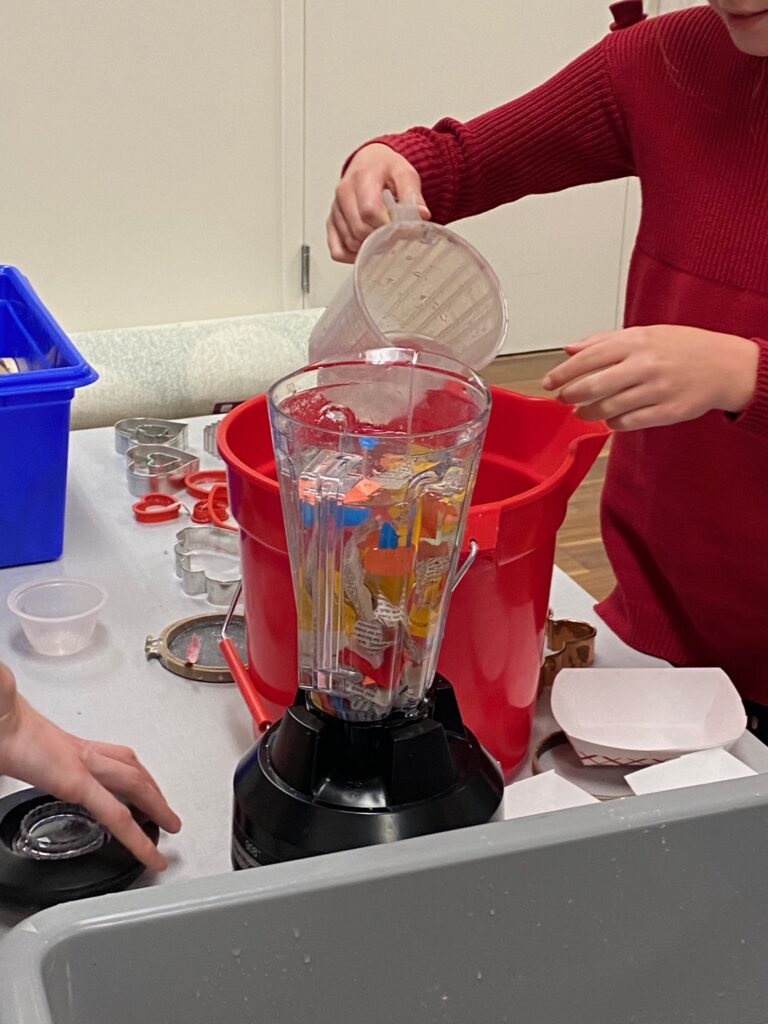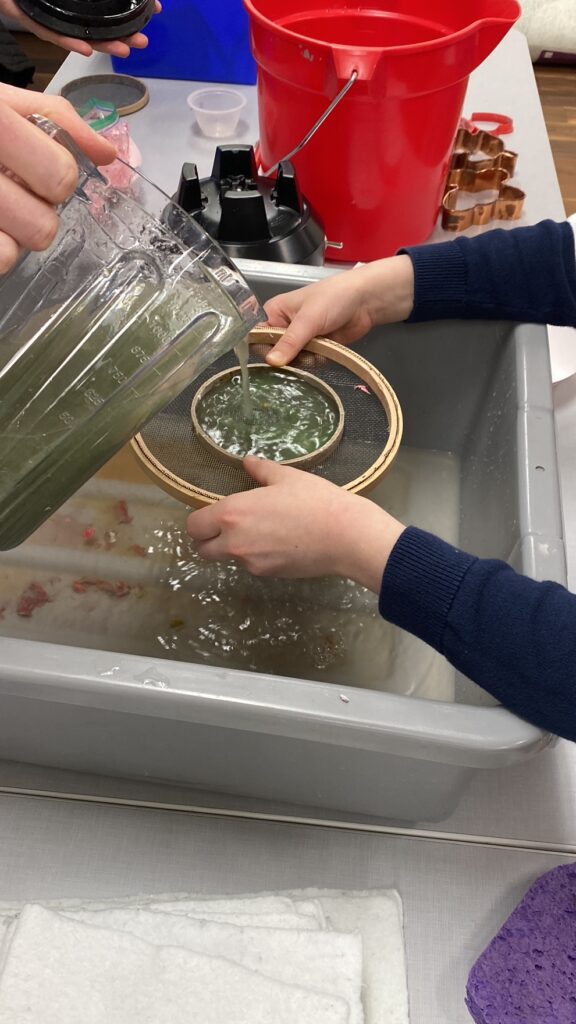In library world, we do our best to see that print materials are treated well and given a long, productive life. Over time, materials are retired from our system when they are damaged. So what happens next?
Kids at the library recently gave discarded materials new life in a paper recycling workshop. Our experiment began with a discussion of where paper comes from: trees, plants, fibers of natural origins. We pondered how fibers are grown, processed, and if they can be reused. If we throw out old paper instead of recycling it, does this change the quantity of new trees needed for new paper production?
The real magic began on the discard table covered in paper past its prime: old newspapers, damaged library books beyond repair, outdated calendars, library rotation slips, and summer reading magazines from years gone by. From these materials, young recyclers picked their own blend of old paper out of which to make something new.

The first step in recycling paper is processing the pulp. Paper was torn and combined them with a large scoop of water in a blender. This mixture was blended for about 30 seconds, separating the fibers and getting them ready to be re-pressed into new paper.

After blending, the moisture needs to be removed. This happened by pouring the blended pulp, called a slurry, through a screen called a mould and deckle.
We then placed the mould over an absorbent towel and dabbed with a sponge to remove even more water. Finally, two towels were placed on either side of the new paper product and our recycler extraordinaires squished the final bits of water out by jumping on the paper sandwich at least twenty times. The result? A beautiful new piece of paper ready for a second life.
Paper recycling is a fun experiment with big implications. Through it we learn about resource management, waste mitigation, and the importance of conserving the materials we consume. Most importantly, it’s a lot of fun. Next time you spill a coffee on a book or your dog eats the epilogue, don’t throw the book away, but consider blending it instead.
@spokanepubliclibrary Pulp your paper to make unique and colorful recycled paper shapes! Learn how here. #paper #library #librarylife #reuse #renew #recycle #libraryfun #Spokane #libraries #librariesrock #arttok #art #recycledpaper
♬ original sound – Spokane Public Library





